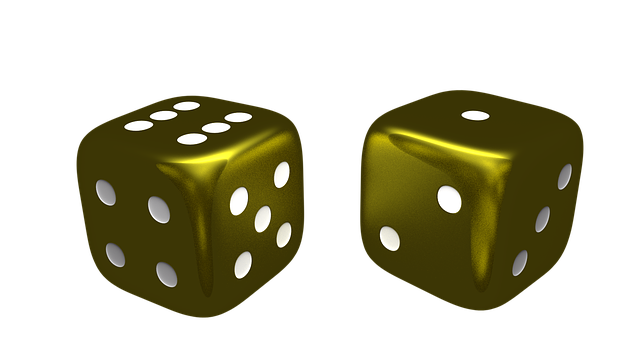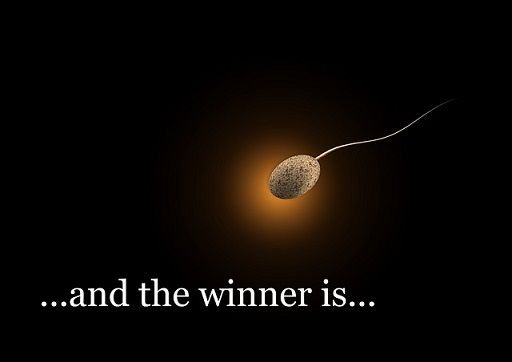Pattern of inheritance and probability

Africa happens to be home to a lot of weird beliefs and practices. One of such beliefs is the incomplete feelings married couples have when all their children belong to a particular sex only. I have witness couples giving birth to numerous children simply because they keep trying to get a child of opposite sex to those they already have. In some parts of Nigeria, female children are not entitled to share in the properties of their father while a wife without at least a male child will get no dime from the husband's properties in case of his demise. The main question for this write-up is, why do some couples keep giving birth to children of the same sex?
In my previous posts, it has been shown how scientists have been able to establish that sex inheritance in man and some other animals is simply by donation of sex chromosomes from each of the parents to the offspring. In man, the inheritance of sex chromosome is such that both male and female sexes are supposed to be in equal proportion, that is, ratio 1:1 in a population. If this were to be the case always, male and female sexes are supposed to be of equal proportions in our societies. So, where is the variation coming from?

Each event of conception by a woman is a separate event which is quite independent of previous or future conceptions or pregnancies. Therefore, the sex of a baby is not a function of the sex of previous babies or future babies that would be given birth to by a woman. The female folks produce X eggs or gametes during meiosis that precedes fertilization. These X eggs or gametes are not differentiated from each other in any form. Males produce X and Y gametes or sperms during meiosis. Therefore, about 50 - 100,000 X and Y sperms are produced during ejaculation. The sperm that is lucky enough ends up fertilizing the egg. With all other conditions being equal, the sperm that gets to the egg first fertilizes it and this ends up determining the sex of the newly formed zygote. That the X or Y sperm will be the one to fertilize the X egg is really an event of chance/probability that takes place at every point of fertilization.
An heterogametic individuals will produce gametes that is a mix of the two alleles in equal proportion. However, the alternate allele/gamete the zygote or the offspring would inherit depends largely on chance. From elementary knowledge of probability, the likelihood of an event happening can be assigned to different categories namely:
- Impossible
- Possible
- Probable
- Sure/highly probable/certain
For example, an offspring of a marriage between a husband and a wife that are both sicklers in certain to turn out a sickler as well. However, the mating of a couple whow are not sicklers but have a family history of the disease has a possibility of resulting in a sickler offspring, not certainty. As a rule of thumb, the probability of an event happening assumes a value between 0 (impossibility) and 1 (certaintly).
The probability (P) that an event (E) will occur is defined such that:
In a similar pattern, if two heterozygous tall (Tt) plants are crossed with each other, there are 4 possible outcome in form of TT, Tt, tT and tt. The probability is calculated such that;
It is important to note that the two probabilities may be based on expectation or observation. Expectation is derived from the previous understanding of the pattern of inheriatnce and probability models. Observations only agree with expectations on the condition that large samples are considered and if conditions are not biased towards a particular gamete or zygote.
In humans, biased or prejudiced sex inheritance are obtained if the conditions in the vagina of a woman favours the thriving of X sperms over Y sperms, hence, there is higher chance of producing female offspring by the woman. The reverse can also be the case if the Y sperms are selectively favoured by the vagina atmosphere resulting in the production of male offsprings. In extreme cases, the conditions in the woman's uterusmay slelctively abort a particular zygote's sex during pregnancy.
Independent events and dihybrid crosses
As it is obtainable in in other areas, two events in genetics are independent if the existence or occurence of one does not in any way affect the occurence of the other. The probability (P) of two independent events A and B occuring together is the products of their individual probabilities. Hence;

For example, in a dihybrid cross involving tall/dwarf and smooth/wrinkle seeded plants, we would expect the two traits to segregate in such a way as to follow Mendelian ratio of 3:1 in the second filial generation. We also expect all possible traits combination to appear in the generation according to the 9:3:3:1 established ratio. If the two traits are considered independently:
Therefore, to obtain the the probability of possible trait combinations in a dihybrid situation:
Summary
Even though there are established standards or patterns in the inheritance of traits in genetics, everything still depends on chance. The more the population of the offsprings or progenies, the higher the chance of the inheritance following established patterns provided conditions are not biased towards a particular trend. Therefore, even though the probability that a couple carrying the sickling traits each will give birth to a sickler baby is 1/4, chance can occur such that their first four babies can be sicklers or non-sicklers. The more the number of offsprings they give birth to, the more the probability will be tending towards the 1/4 ratio.
I hope you have gained one or two things in today's write-up.
Thank you for reading.
References
khan academy: Probabilities in genetics
education.iinl: probabilities of genetic traits
palomar.edu: Probability of Inheritance
the guardian: Game of chances: inheritance is a question of probability, not destiny
thoughtco.com: Probabilities for Dihybrid Crosses in Genetics
Please note: All images were obtained from free sources under the creative common licence

This is a test comment, notify @kryzsec on discord if there are any errors please.
Being A SteemStem Member
Excellent explanation of the statistics behind it. Genetic drift (chance driven evolution) is small in large populations.
-Nothing in Biology Makes Sense Except in the Light of Evolution
-Theodosius Dobzhansky, 1973
Hi, this is really nice article. However i want to ask a question. Maybe not question but brainstorming.
You said that if T is dominant according to t and if we couple Tt and TT then we can not get any t speciality. Ok, according to probability, this is correct. In our world, is it like this, which means there is just white or black. Where is the between these two colors. I mean that if T represents tall and t represents short then for probability we just get tall or short. What about average. In real life, we have average also.
I want to come up with this idea, for sexual there is man and woman. What about averages? Then i can conclude that homosexuality is not a disease write?
I just made the some inferencea. If i disturb thr article, i am sorry..
Greeat..that's an incredibles probabilties..hehehehee
Congratulations @hadji! You have completed some achievement on Steemit and have been rewarded with new badge(s) :
Click on any badge to view your own Board of Honor on SteemitBoard.
For more information about SteemitBoard, click here
If you no longer want to receive notifications, reply to this comment with the word
STOP